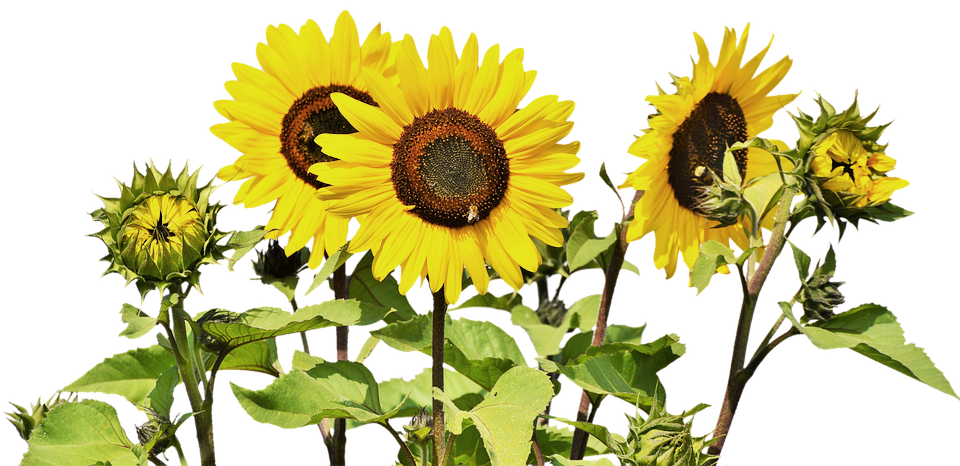
Our Top 10 Countdown of Easy to Grow Vegetables for Beginners
By Chris Edmunds
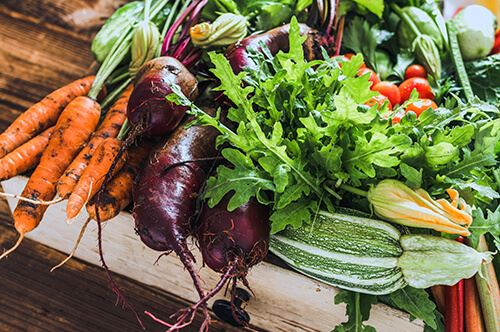
We’ve been receiving so many inquiries about easy to grow vegetables for first-time gardeners, so we figured we’d count down the top 10 contenders! We couldn’t be more thrilled to see so many eager new plant enthusiasts getting their hands dirty for their first gardening season, and we’re happy to help in any way we can!
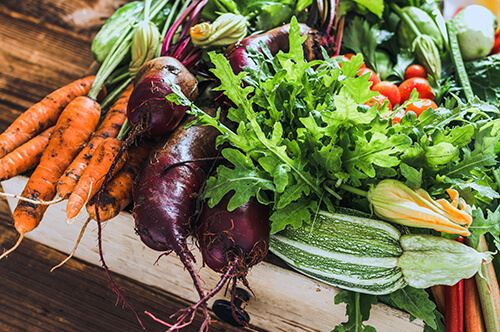 10 Easy Vegetables to Grow for the Newbie Gardener
10 Easy Vegetables to Grow for the Newbie Gardener
Ready to create your own fully stocked produce aisle right in your own backyard? These super easy to grow vegetables are must-haves for any newbie who wants to sharpen their skills in the garden. So as long as you follow the directions for each particular plant and fulfill their basic requirements for sun, water, and soil, you shouldn’t run into any major blunders.
Here are the top 10 easy veggies to grow that you absolutely gotta have in 2021!
10: Zucchini
Zucchini is one of the most easy to grow summer squashes, and we love their big, bright yellow blossoms! Did you know you can eat the blossoms too? Zucchini need plenty of sunshine—at least 6–8 hours per day—and consistently moist soil that’s high in nutrients. Mixing plenty of compost into your garden bed at the start of the season will help to keep your zucchini plants well-fed. It’s a good idea to provide them with adequate space in the garden to spread out.
As you’ve ticked all those boxes, your zucchini plant should be highly successful! With high crop yields and delicious, hearty produce, zucchini is great for families to grow if you want something filling and nutritious that even the pickiest eaters will enjoy. Zucchini has a thick texture that makes them great for spiraling into noodles as a substitute for spaghetti or baking into chips with a crispy parmesan coating!
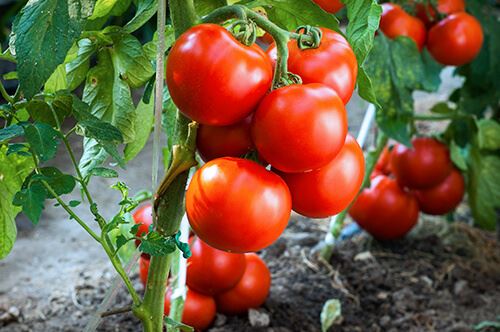 9: Tomatoes
9: Tomatoes
Tomatoes have one of the largest crop yields out of any garden vegetable. While they can sometimes be a bit susceptible to pests or diseases, you shouldn’t encounter any big issues if you buy a disease-resistant variety. Like zucchinis, tomatoes need lots of sunshine and regular watering—to produce all those juicy fruits!
There are two categories of tomato plants: determinate and indeterminate. Determinate tomatoes grow in more of a bush form making them the best option for container gardens. Indeterminate tomatoes are vining and need support like a tomato cage, and they will continually produce fruit until the temperature drops. Indeterminate cherry tomatoes can be grown in hanging baskets, and the little fruits will hang down like colorful ornaments!
8: Cucumbers
Cucumbers are another easy-to-grow vegetable that typically requires a trellis, but that doesn’t necessarily mean they take up a ton of space. Try letting them grow up a fence or a balcony railing guided with string. Bush-type varieties of cucumbers are easy vegetables to grow in pots, so if space is limited in your yard (or even on your balcony), you can still grow them as long as there’s enough sunshine!
Cucumbers require frequent pollination to get long, even cucumbers, so it can be beneficial to plant flowers nearby to bring in more bees. And remember, if your harvest is a bit too big to eat all at once, you can always preserve them by making some tasty dill pickles!
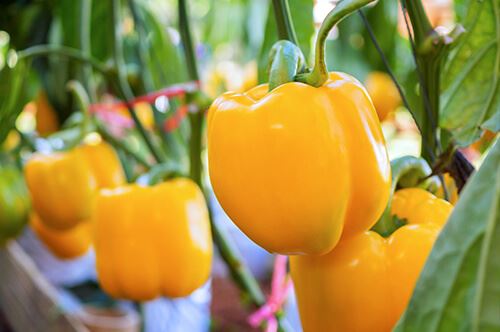 7: Peppers
7: Peppers
Peppers can be expensive at the grocery store, so growing them yourself is always worth the effort! As a moderate-sized plant with colorful fruits, peppers make a good choice for a container vegetable garden. Peppers need lots of sunshine and nutrient-rich soil so they can develop the best flavor. Pepper seeds need moist, warm air to germinate, making them notoriously hard to start from seed. Alternatively, you can pick up some starter plants from the garden center and transplant them with little effort.
Both hot and sweet peppers are readily available as transplants. Hot peppers are a bit easier to grow and tend to yield more fruit per plant than sweet bell peppers. Peppers do best in full sun and need regular watering to thrive. Overwatering can cause the fruits to lose flavor, however.
6: Sweet Potatoes
Sweet potatoes, unlike the cool season Irish potato, love the heat of a long midwest summer and are surprisingly easy to grow. They need loose, good draining soil and full sun to thrive. Sweet potatoes have little issues with pests and disease and won’t be ready for harvest until fall, so they are easily left to sprawl throughout the garden with just regular watering. The vines, reaching 6 ft or more, form a groundcover that can help shade the soil when planted below larger upright veggies like peppers or okra.
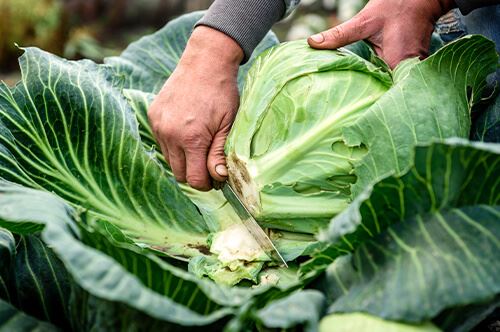 5: Cabbage
5: Cabbage
Beginner gardeners are always so surprised at how pretty cabbage plants can be! Both purple and green varieties bring a lovely ornamental quality to the garden, on top of providing a hefty portion of vitamin-rich leafy greens. The most important thing to keep in mind when growing cabbage is maintaining a consistent watering schedule. Cabbage needs water to develop big heads, but overwatering could result in the head of your cabbages splitting.
Be on the lookout for cabbage loopers or worms—but if you see them, don’t worry! They’re easily treatable with natural, vegetable-safe pesticides. A great choice is one with Bacillus thuringiensis (Bt), which is a natural bacteria that affects caterpillars, keeping them from feeding on your plants. Try to plant them early in the spring—they can take quite a while to mature, but they’re highly cold tolerant. A little unexpected cold spell early in the season won’t end up ruining your crop.
4: Carrots
Carrots are so fun to cultivate! There’s something so supremely satisfying about pulling one of these big, colorful veggies from the soil. We especially love rainbow carrots—they make such a beautiful side dish for fancy dinners, with just a little glaze of butter, salt, and fresh dill.
To make sure your carrots grow large and don’t have stunted, stumpy growth, it’s best to plant them in raised garden beds. Growing them directly in the ground can sometimes be challenging, as the soil is more compacted and harder for the roots to penetrate deeply. If you till the soil sufficiently and loosen it up well, you can still grow carrots, but the raised bed method will be simpler!
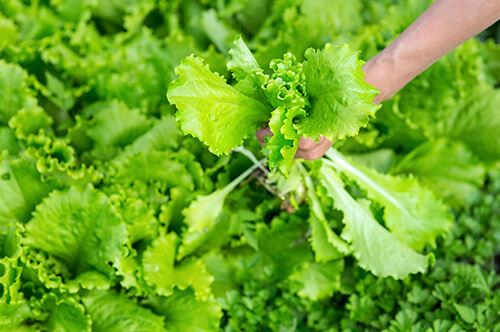 3: Lettuce
3: Lettuce
Lettuce is available in head and leaf varieties. One of the amazing things about growing leaf lettuce is that you can keep grazing on it whenever you want. It keeps on growing and filling out, so trimming of some leaves here and there won’t hinder its development. So, if you’re worried about wasting food and having too much to eat from one massive harvest, leaf lettuce provides harvestable food over a long period instead of all at once! Head lettuce, on the other hand, is usually left to mature and then harvested all at once.
Lettuce prefers cooler temperatures, so it’s best to grow in spring or fall as hot summer sun will burn it or cause it to bolt. To prolong the life of your lettuce crop try growing it where it will be protected from hot afternoon sun.
2: Beans
When kids learn about the life cycle of plants in school, they usually learn by sprouting beans in cups. So, if a 7-year-old can do it, we’re sure you can too! Plus, with so many different varieties to choose from, you can grow quite the colorful assortment. Bush beans won’t require any staking and are pretty low-maintenance, but pole beans will need some kind of trellis or structure to climb.
Keep the soil regularly watered and well-draining, and make sure they’re getting lots of sun. In addition to the delicious harvest they provide, your bean plants will also deposit nitrogen into the soil, which will help feed all your other plants. They’re pulling double duty by acting as both a plant and a natural fertilizer—gotta love that!
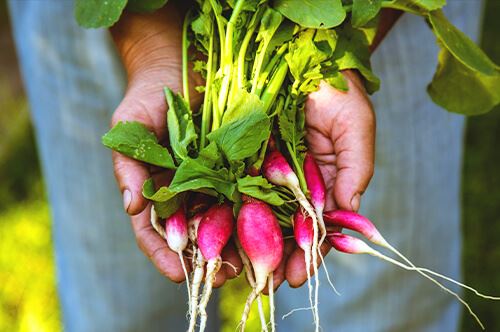 1: Radishes
1: Radishes
You may be surprised, but the number one easy to grow vegetable is undoubtedly the radish! With some varieties only taking 30 days to mature, you can enjoy these spicy, crunchy, root vegetables faster than any other. To make sure your plants don’t bolt (go to seed and become bitter) plant them in spring or early fall when the temperatures have cooled a bit. We recommend planting a new batch every two weeks from mid-March to May for a constant supply of fresh radishes ready to go. A hard frost can damage the new sprouts so cover if frost is in the forecast.
If you’re unsure of what to make with your radishes, we suggest slicing them up and pickling them in a sweet vinegary brine. Sweet radish pickles are a fabulous topping for fried chicken sandwiches, burritos, and plenty of other delicious comfort foods.
We guarantee you’ll love cultivating these easy to grow vegetables. Even if you make a few missteps along the way, there’s so much to experience and appreciate out in the garden. And when you take the first few bites of your own organic, homegrown produce, you’ll be so glad you took on the challenge!
Visit Kaw Valley Greenhouses this spring to see what’s new for 2021. There are always exciting new hybrid varieties and colorful heirloom vegetables to grow, so your veggie garden will be just as beautiful as it is delicious!

